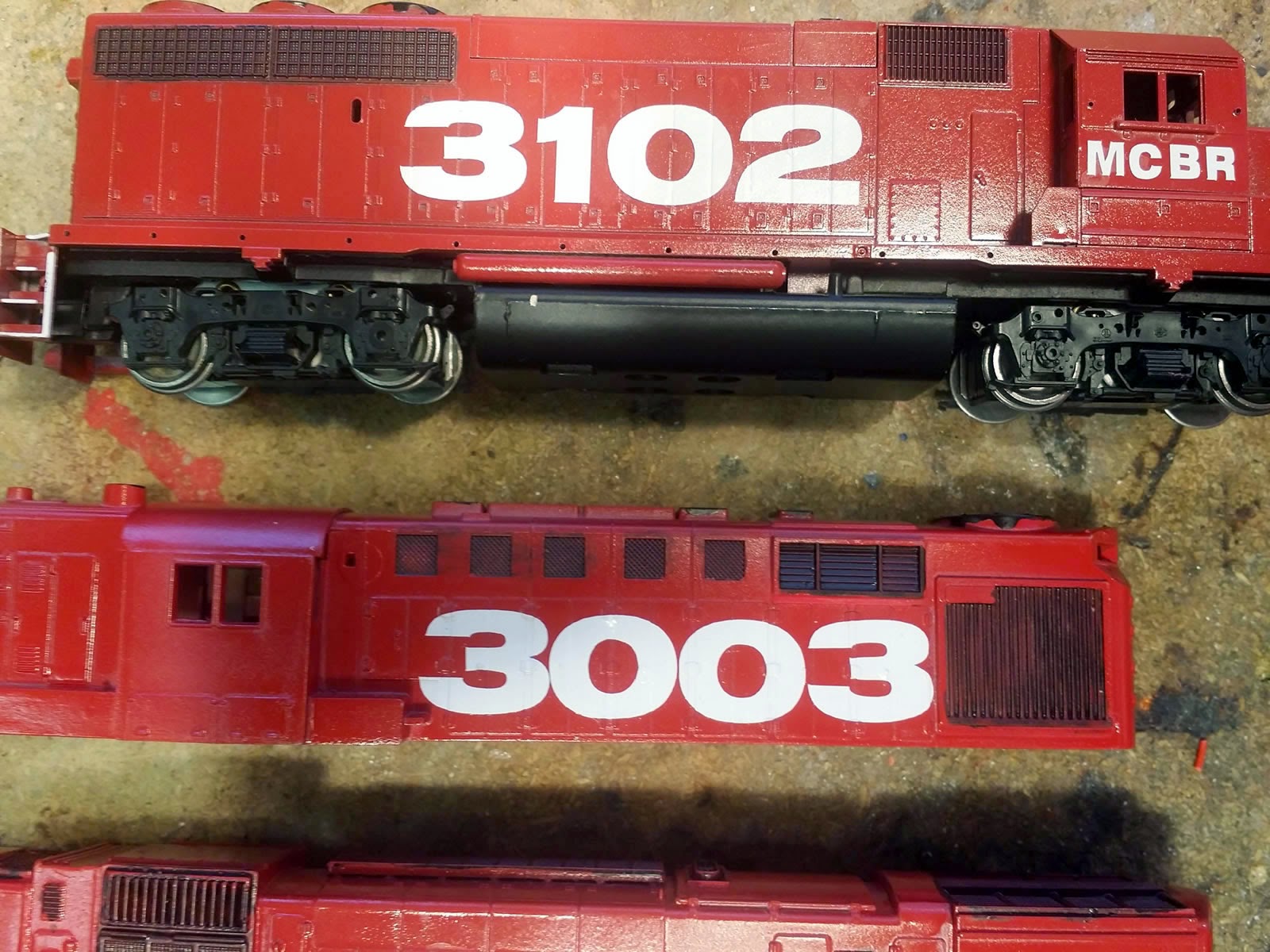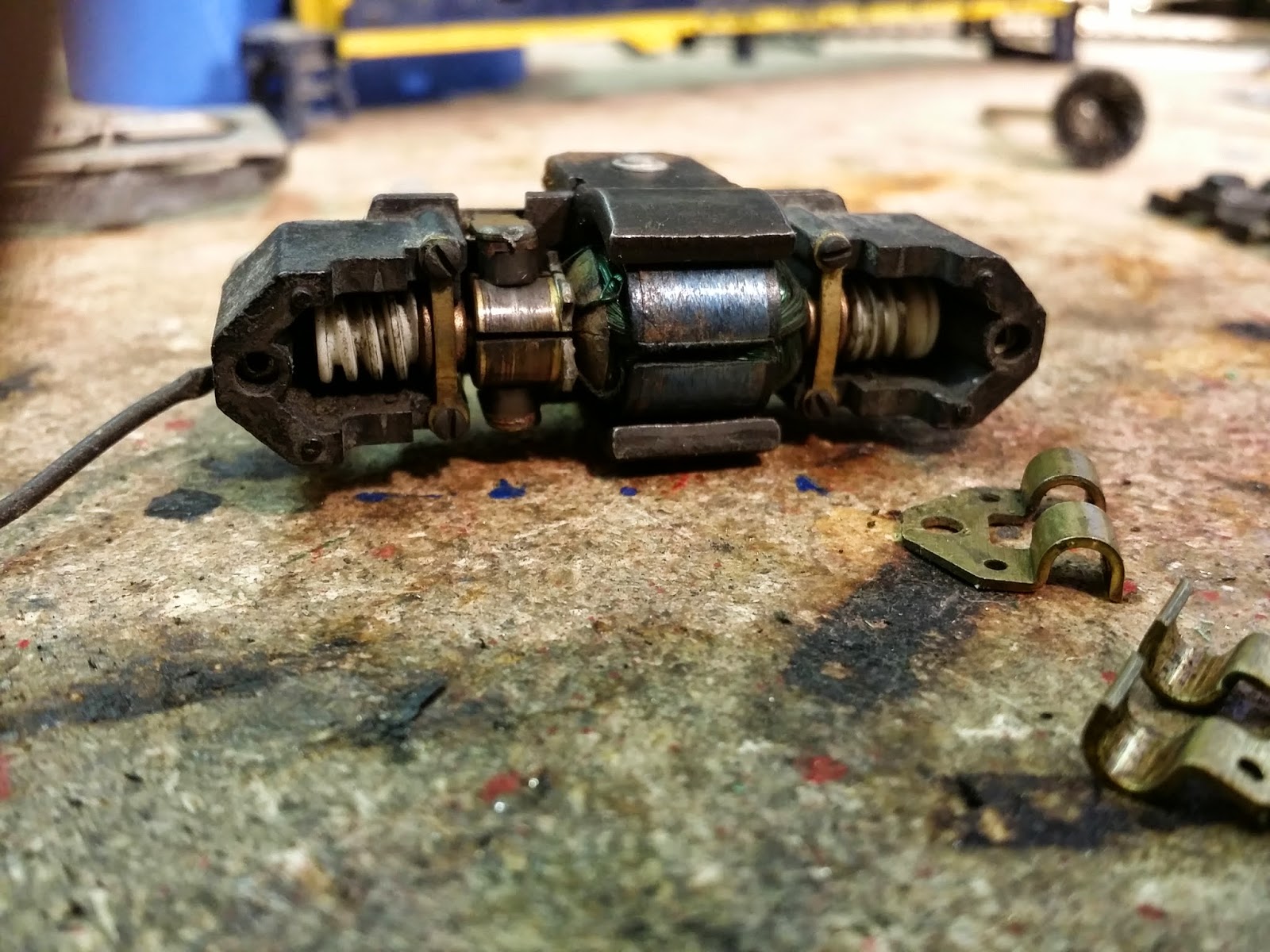Fast Tracks Handlaid Switch Review
So I made my first switch using
Fast Tracks
Here's the link:
http://www.handlaidtrack.com/
I got the kit to make #6 Code 100 switches in HO Scale.
First thoughts:
1. They messed up my initial order and it cost me an extra $45 to send back the wrong rail and receive the correct rail.
2. The customer service takes some patience to contact, mainly because the guy you speak with is the guy who makes the stuff.
3. That being said, he knows what he's talking about. Leave a message and he will call you back.
4. Print the diagram for the switch you are making. I happened to have legal sized paper and printed mine on one page and it is absolutely a timesaver and really helps you understand what you are doing.
5. Make your first switch in front of your computer using the videos that come with kit. I watched all of them first and then watched each one as I completed each step. Certain videos are out of order on purpose, mainly the ones demonstrating how to actually make the points. Watch those very carefully.
6. I used both my 30 watt iron and my 250 watt gun. I found the iron sometimes not powerful enough to get the solder to flow. The big gun is too powerful for much of the build and I actually melted a couple pc board ties with it.
Things I learned:
1. Tinning the parts where ever you can makes things just a but easier and prevents globs of solder from forming.
2. The Plio Bond glue is good stuff. Make sure you shake it just like the video tells you and clean your tip everytime you use it. Keep the box so you can stand the glue upright when not in use. Be patient with glue, it is contact cement so give it the time to cure on both parts before connecting them. I had some quicksticks come apart a couple time because I didn't let the glue set long enough.
3. After I made my switch and installed it into my test track I learned right away that my points weren't sharp enough. Just a touch from my moto-tool cutoff wheel corrected this problem.
4. I did not make hinged point rails and have now found out that they are hard to switch positions. I tried a ground throw, but a plastic ground throw doesn't do the trick. I still have no intention of ever make hinged point rails at this time because the continuous ones look and perform so well. The problem of throwing the switch is one that I can solve, just haven't gotten to that yet.
5. The conditions I tested my first switch on are harsh. It's carpet taped directly to carpet with no road bed. That's my standard for testing reliability. I post more about how and why I do this later, but for now I'll say it's mainly to test my equipment to make sure everything meets operating standards. I also use the Life Like track with plastic road bed and standard flex track directly on carpet to incorporate a number of grade changes and soft track sections. Anything that works on my test track works everywhere. The switch is working better than an Atlas Snap switch that I had in there before.
6. As poorly as I made my first switch, it's a big improvement over a ready to run snap switch.
7. Making Fast Tracks is a good example of a skill with a learning curve. I expect my next one to be a huge jump in quality.
8. The form needs to be brushed thoroughly with the wire brush that comes with it. I couldn't understand why the rails were so tough to get into the form until after I was done. When finished I scrubbed and washed the form with a wire brush and soap to clean the acid paste flux out of it and noticed that there had been fine machining particles in the sharp places. Rail fits much easier now.
9. Having the rail fit well into the form will eliminate 75% of the problem I had with gaps between the rail and the PC Board ties.
10. Fast Track swtiches are super forgiving on mistakes, which is awesome because I made so many. I re-did a bunch of soldering outside the form with no problems. I used my moto-tool to fine tune sharpness with no problems.
11. Here's a tip on the point form tool: take a thick shop rag and lay it across your bench vice and gently secure the point form tool in the vice before filing. Then use both hands on the file to make the point. It vastly improves the accuracy of the filing. Also use a brass wire brush to clean the file, it does a much better job than the steel brush.
And that's my first review....in the next one I should have more useful info and I'll do some pix to go with it.
Final thought:
I invested about $450 into everything I got. I got enough stuff to make 15 switches and all the one-time buy tools. That seems like a lot of money, but 10 of those switches are being bought by a couple friends which helped me with the cost. In my group of modelers, I'm the switch guy now and that should make this investment even up for me over another couple batches.
More to come about Fast Tracks.....my first review says Fast Tracks is some good stuff and it was fun.

















































